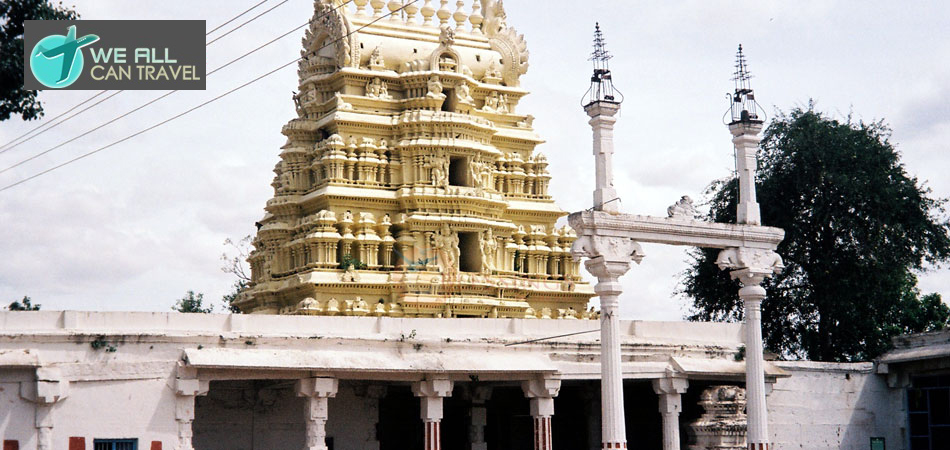Legend Of Pannaka Narasimhaswami Temple
In Vishnu Purana, Mangalagiri is referred to as Paaryathra Parvat, Dharmadri and Thotadri. In the chapters of Brahma Vaivartha Purana, Lord Shiva narrates to Devi Parvati the greatness of Narasimha Avataar and the sacredness of Mangalagiri. This is known as Bhavani Shankara Gita.
In Krita Yuga, a prince by name Hrusva Sringi, a devotee of Lord Vishnu, did penance here to rid himself of his bodily deformities. His father came in search of him and interrupted his penance. The prince then transformed himself into an elephant and later into a mountain and continued with his penance. Lord Vishnu, pleased with his prayers, promised to stay on that mountain forever. Interestingly, the shape of Mangalagiri mountain resembles an elephant.
Lord Narasimha, after the annihilation of demon king Hiranya Kashipu, was pacified by His consort, Devi Lakshmi, here.
The offerings made to the Lord varied from one yuga to another. It was honey in Krita yuga, ghee in Treta yuga, milk in Dwaapara yuga and paanaka or jaggery water in Kali yuga. Paanaka continues to be a popular offering to Lord Narasimha on the hill even today.
In Mahabharata, references are found to this mountain range, known as Indrakila, Kanakasaila and Mangalagiri. The river Krishna divides the hills. Pancha Pandavas had stayed on Mangalagiri during their exile. They had the darshan of Veda Vyasa and Indra, who blessed them for their victory in their war against adharma. Arjuna had done penance to receive the Pasupata Astra on the Indrakila Hill, now in Vijayawada..
 >> Agasteeshwara Temple
>> Agasteeshwara Temple >> Anantha Padmanabhaswami Temple
>> Anantha Padmanabhaswami Temple >> Ananthasana Temple
>> Ananthasana Temple >> Annapoorneshwari Temple
>> Annapoorneshwari Temple >> Arunachaleshwar Temple
>> Arunachaleshwar Temple